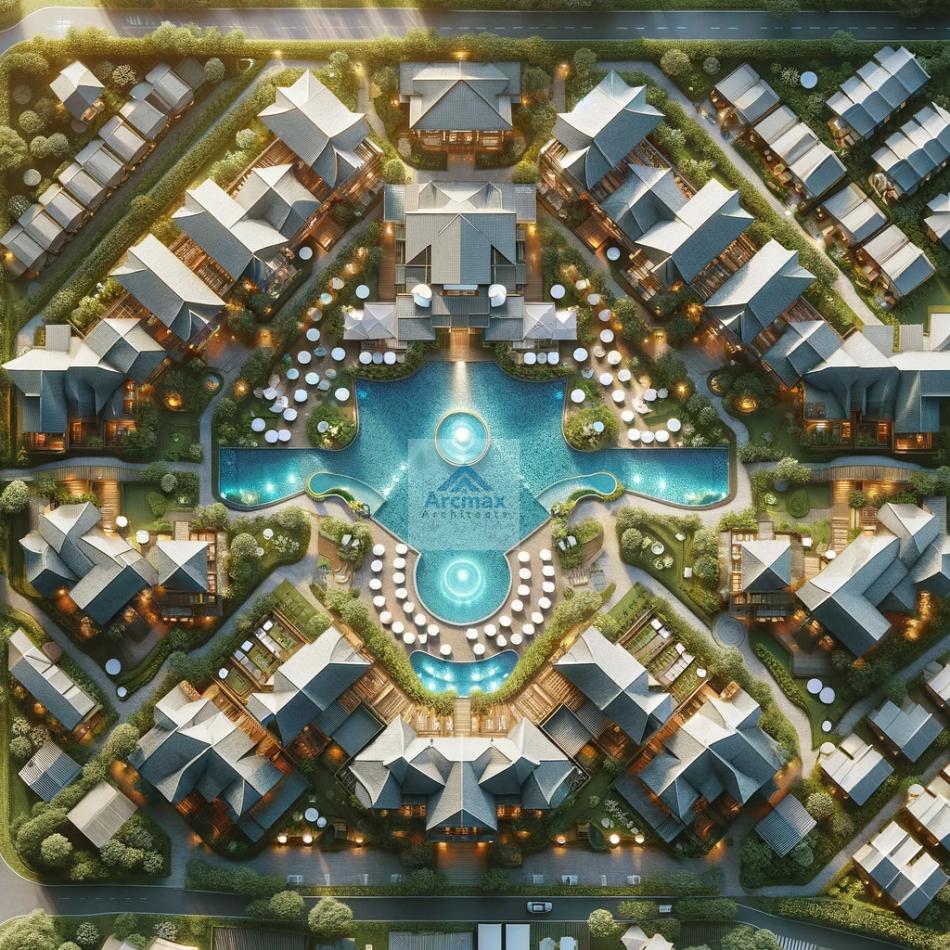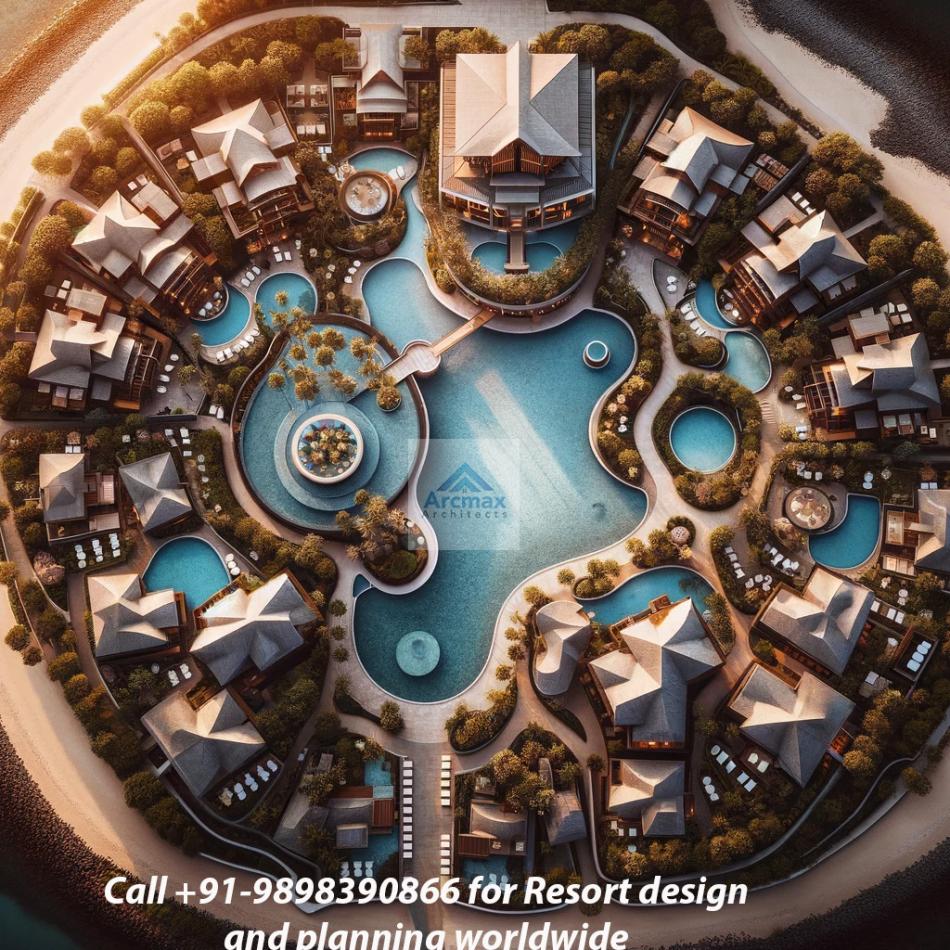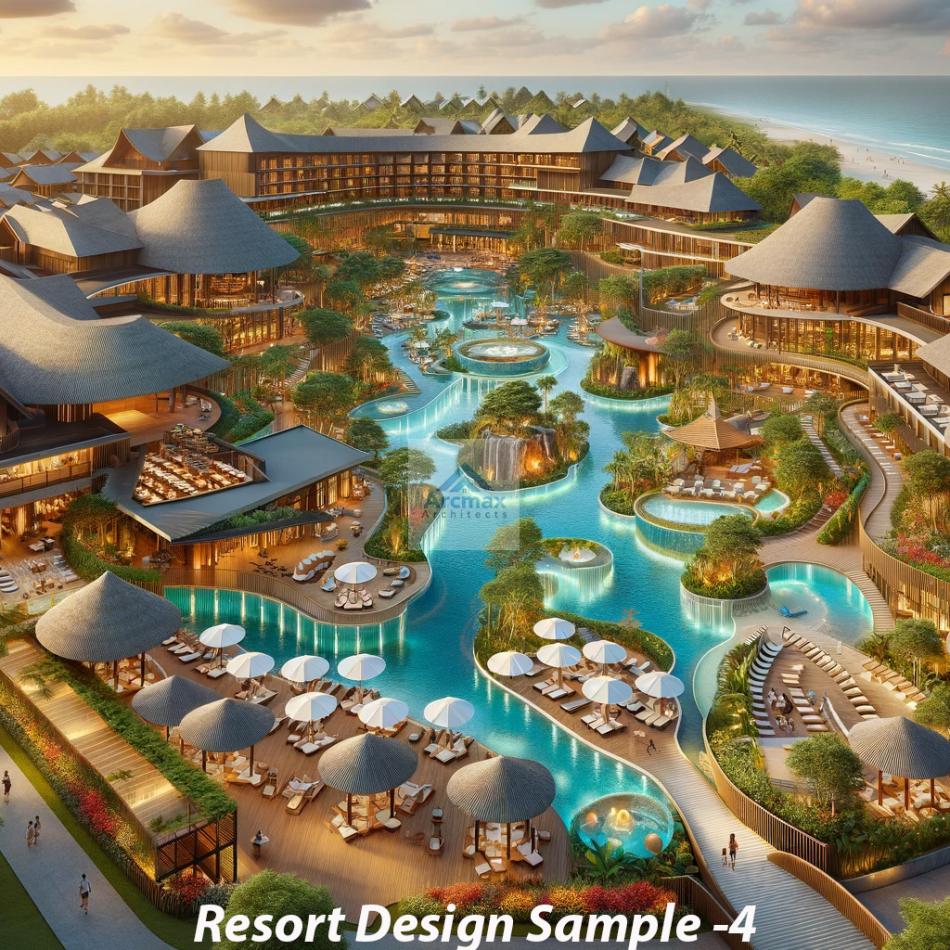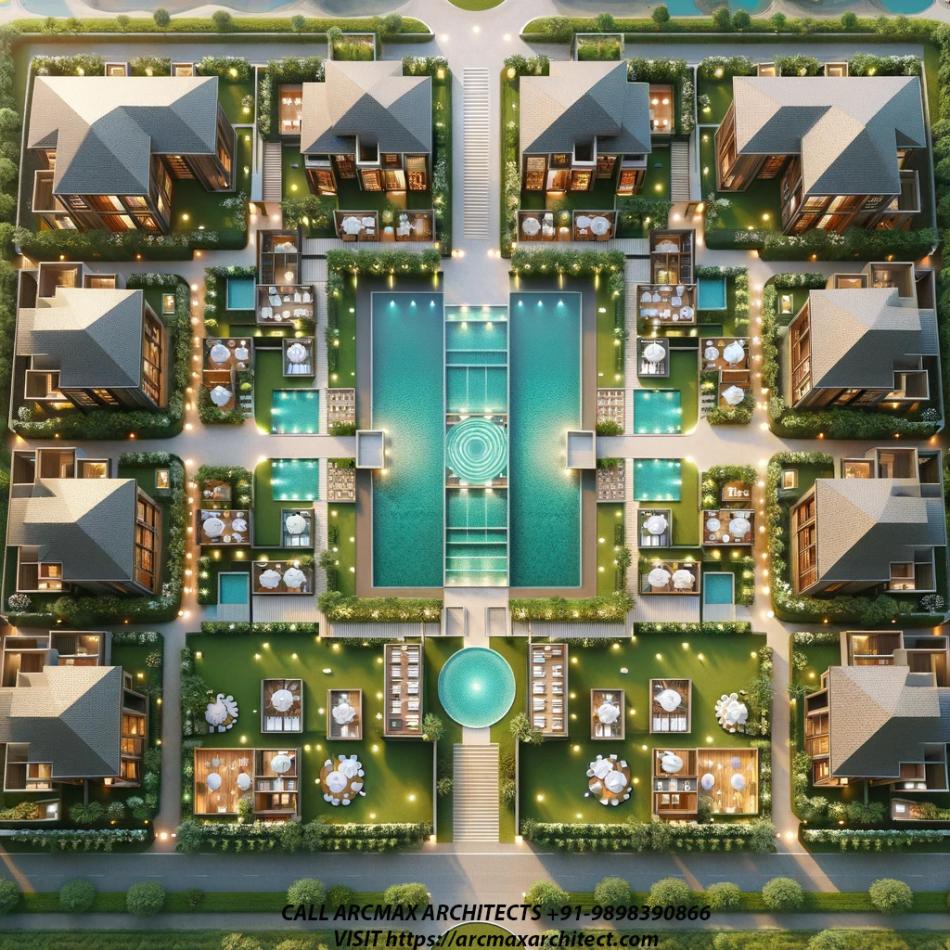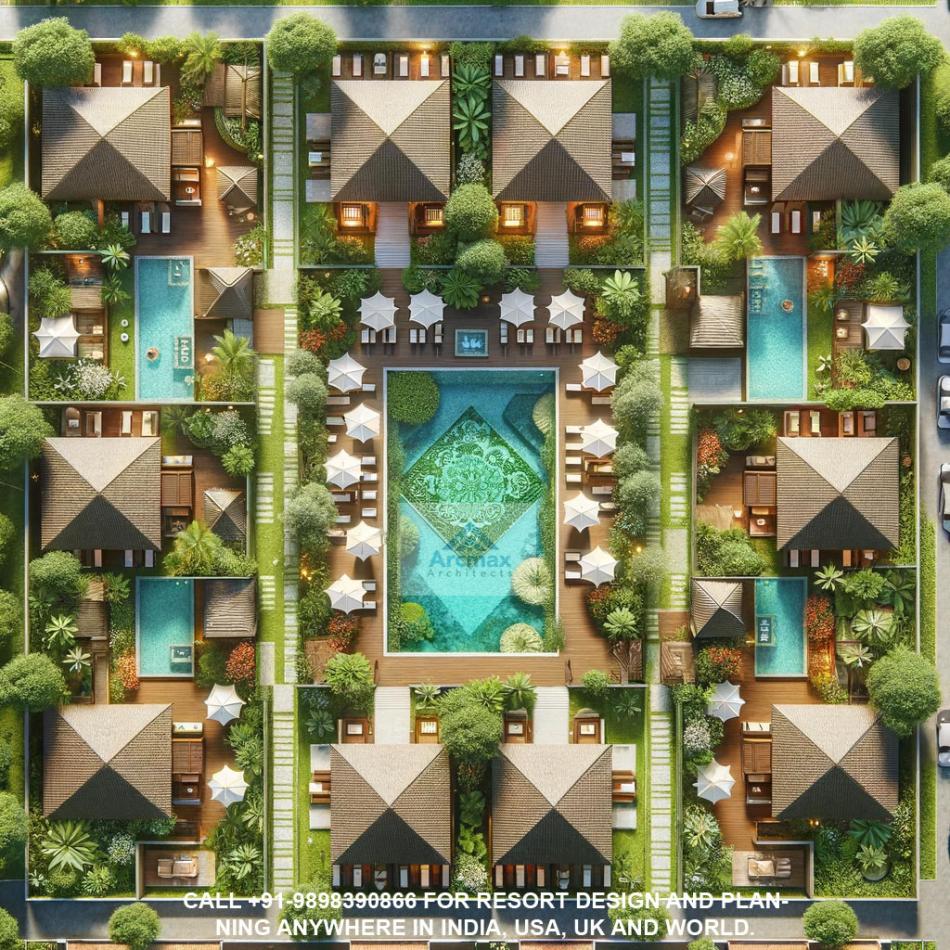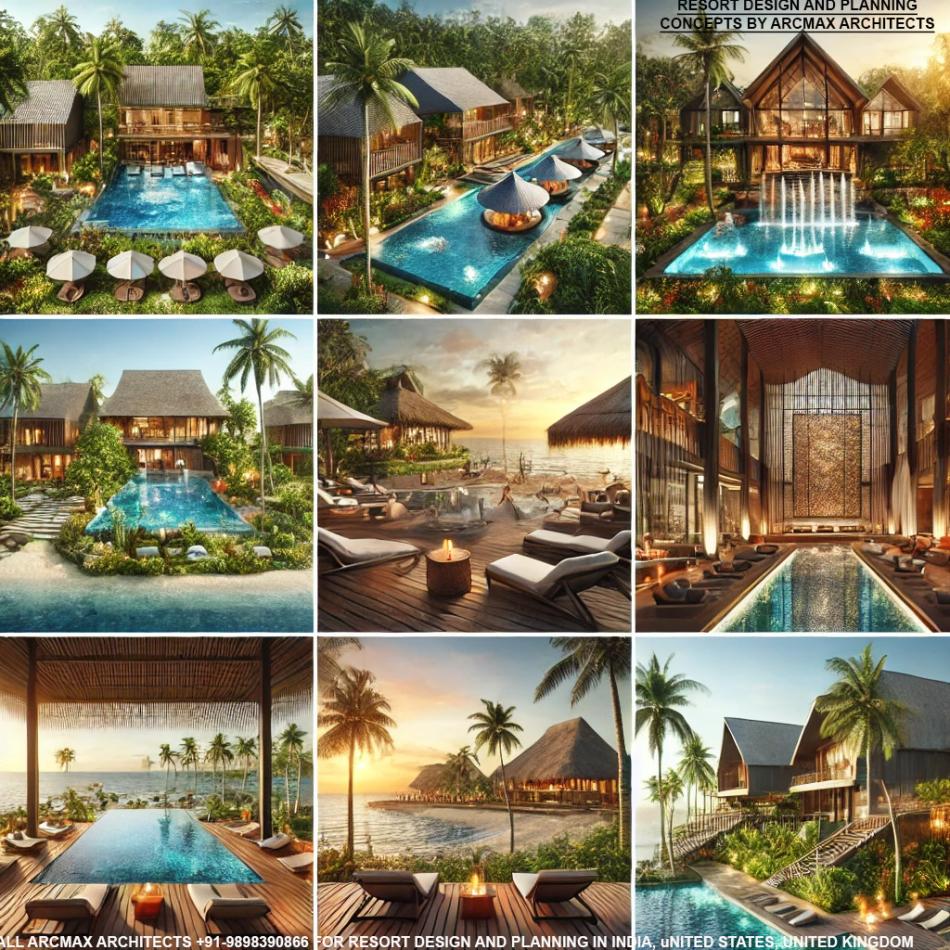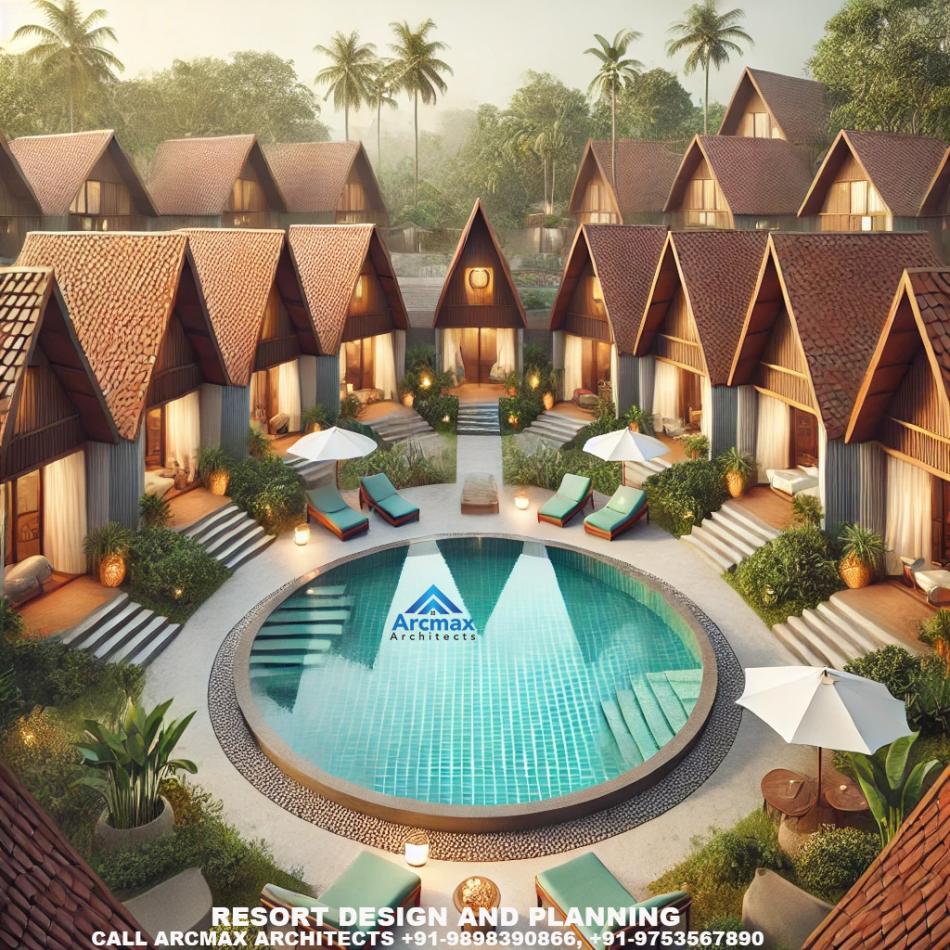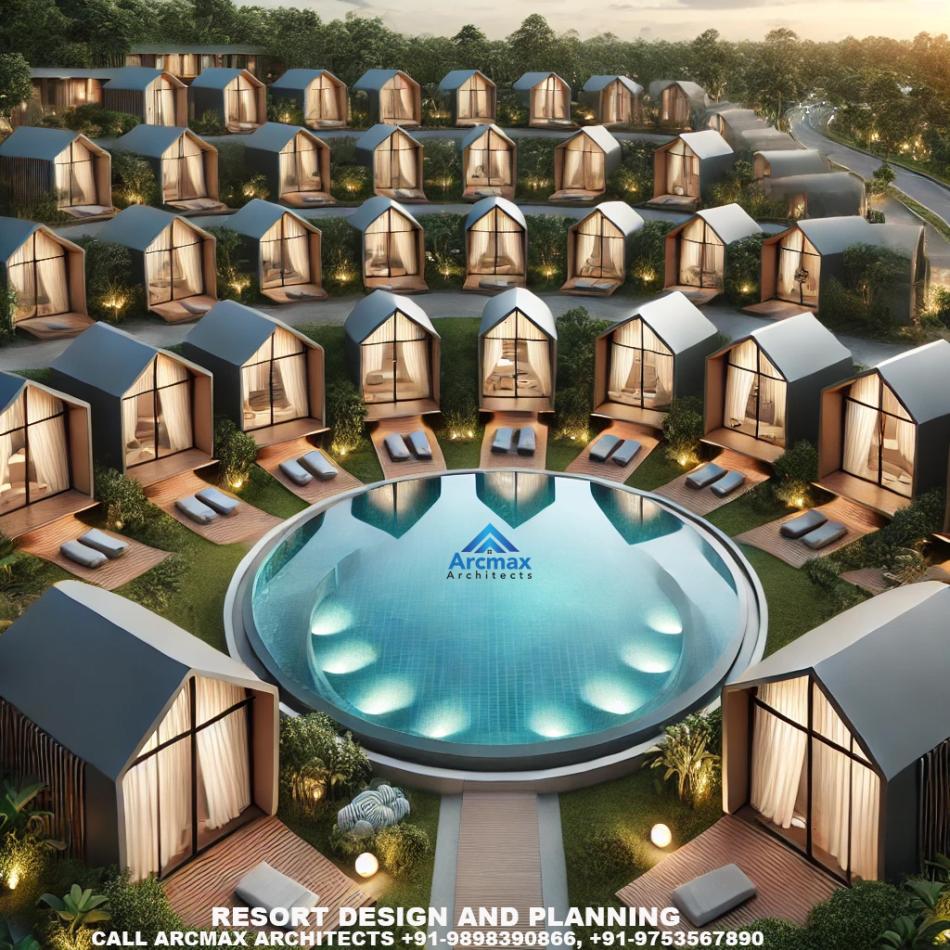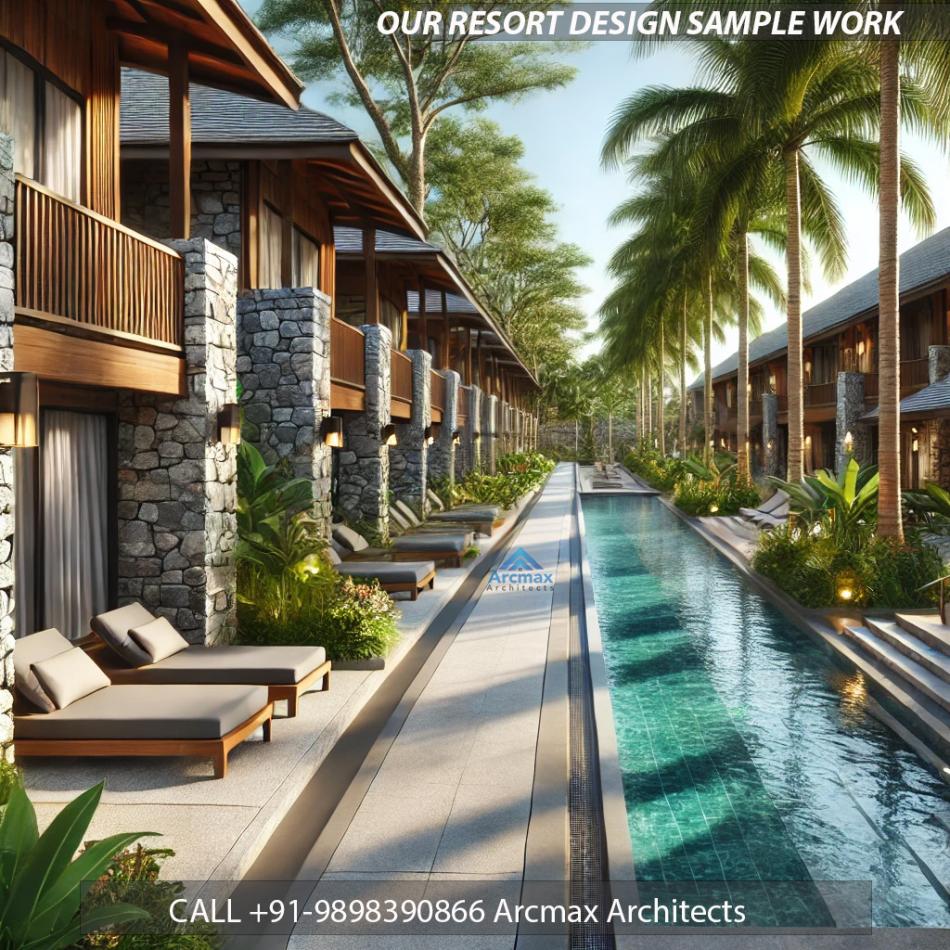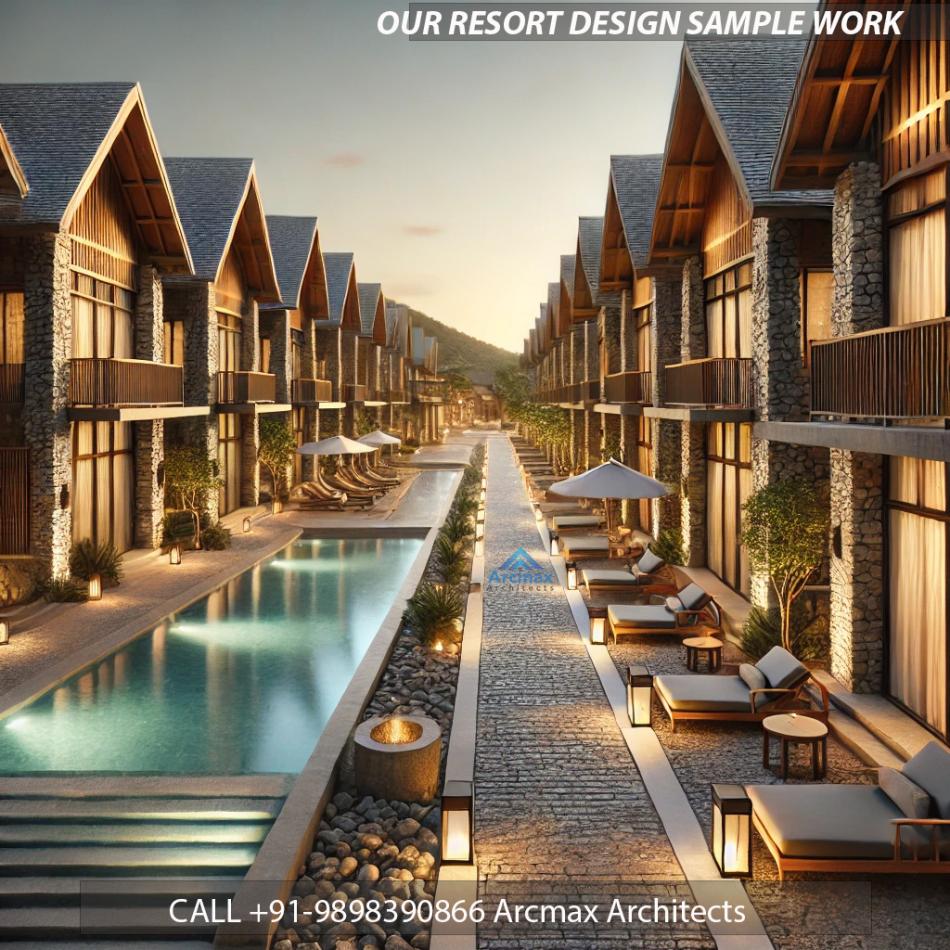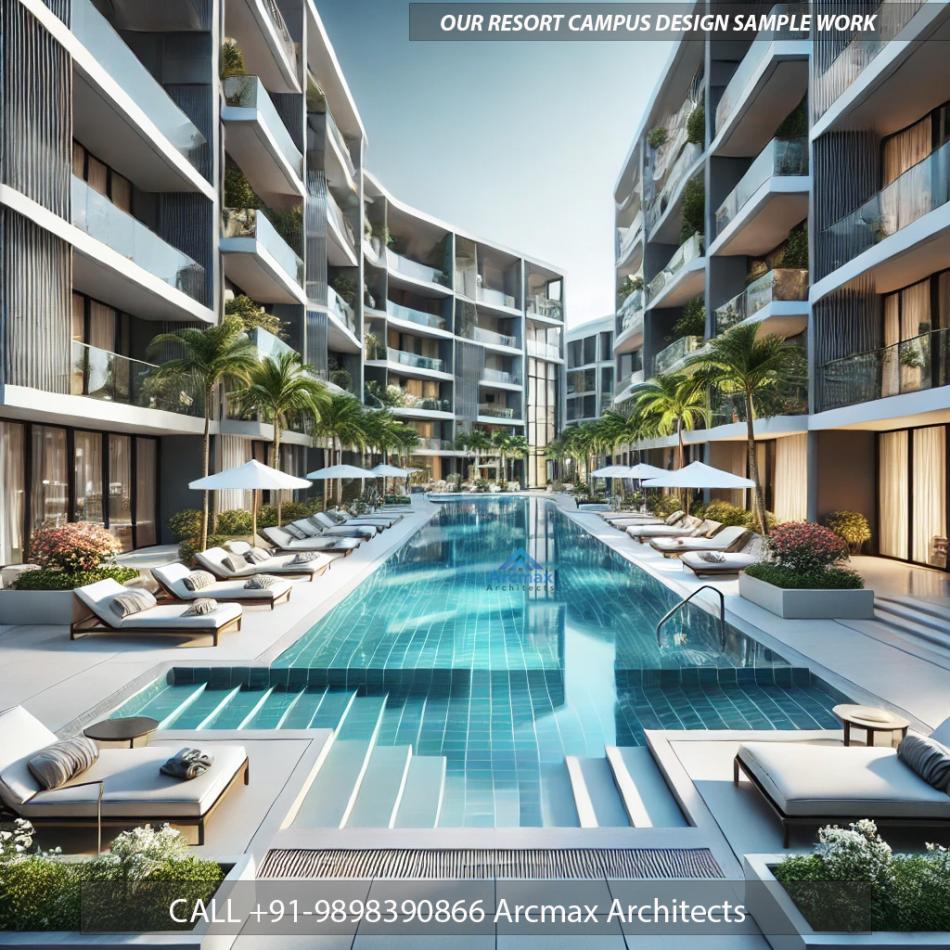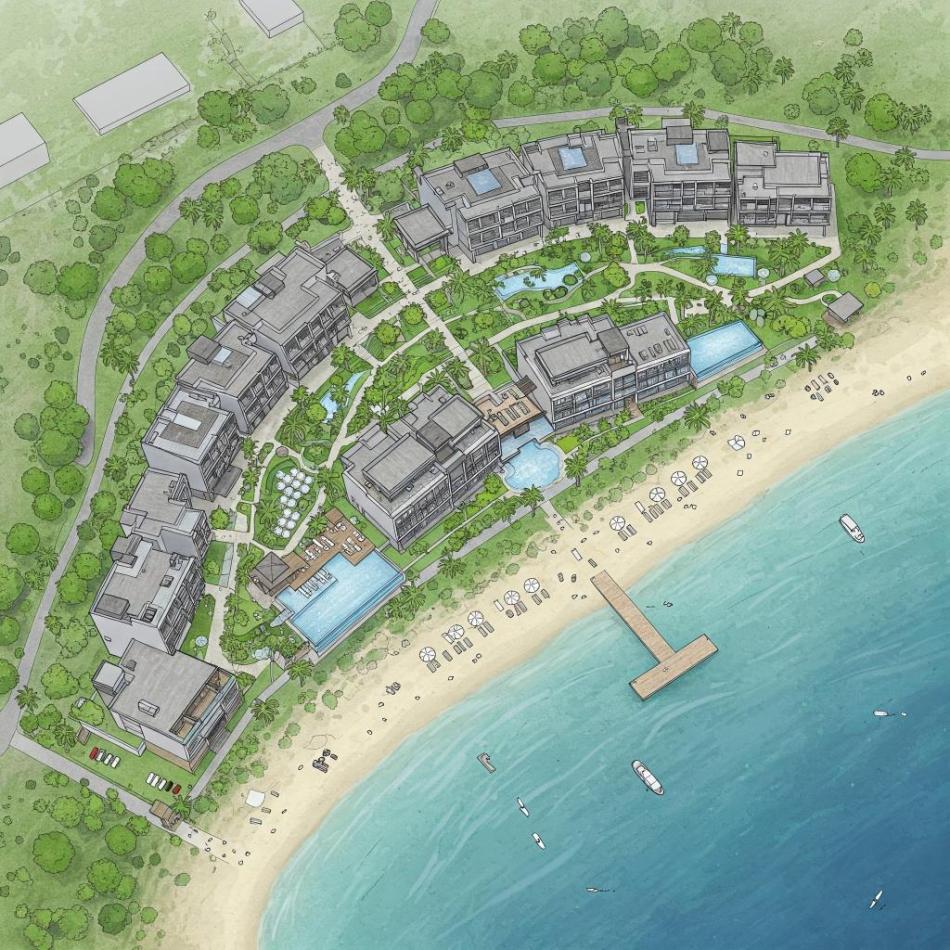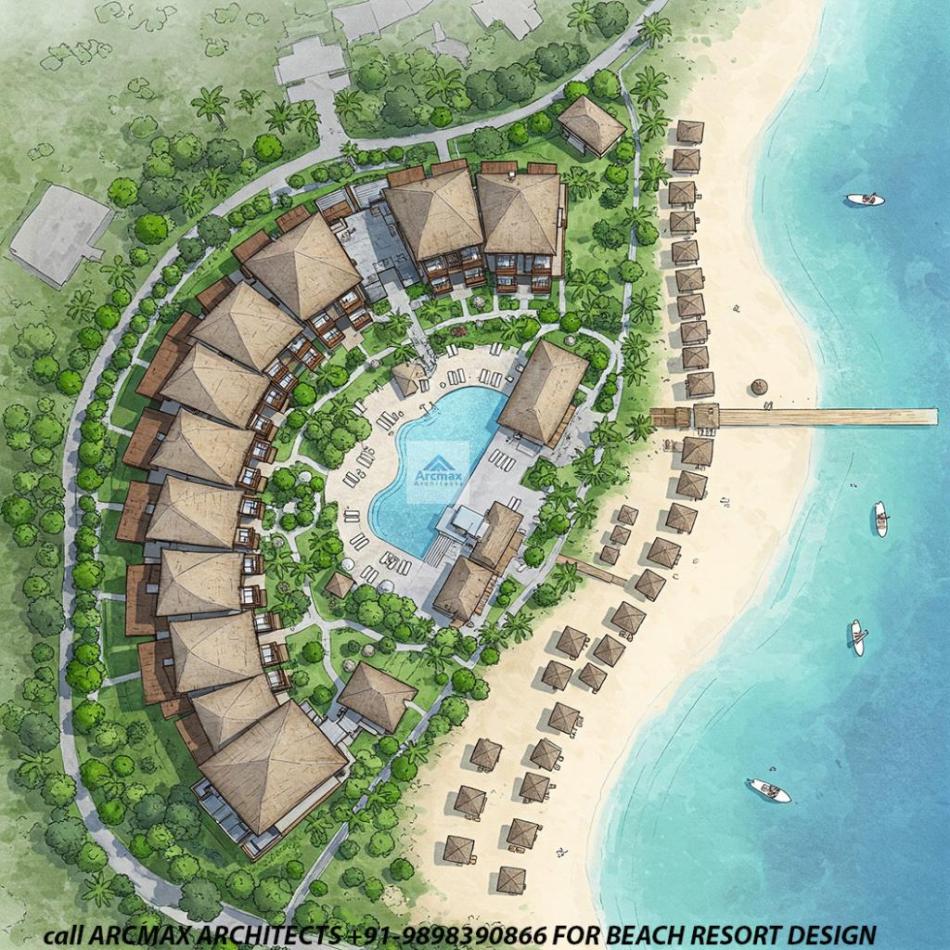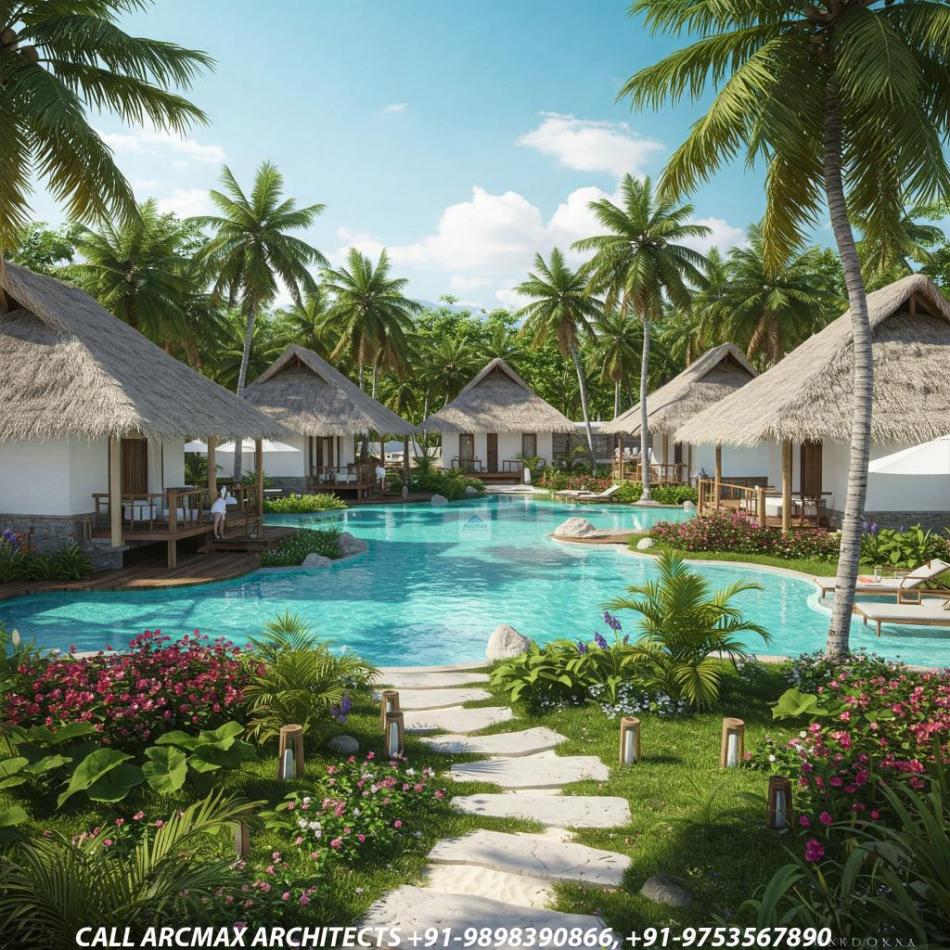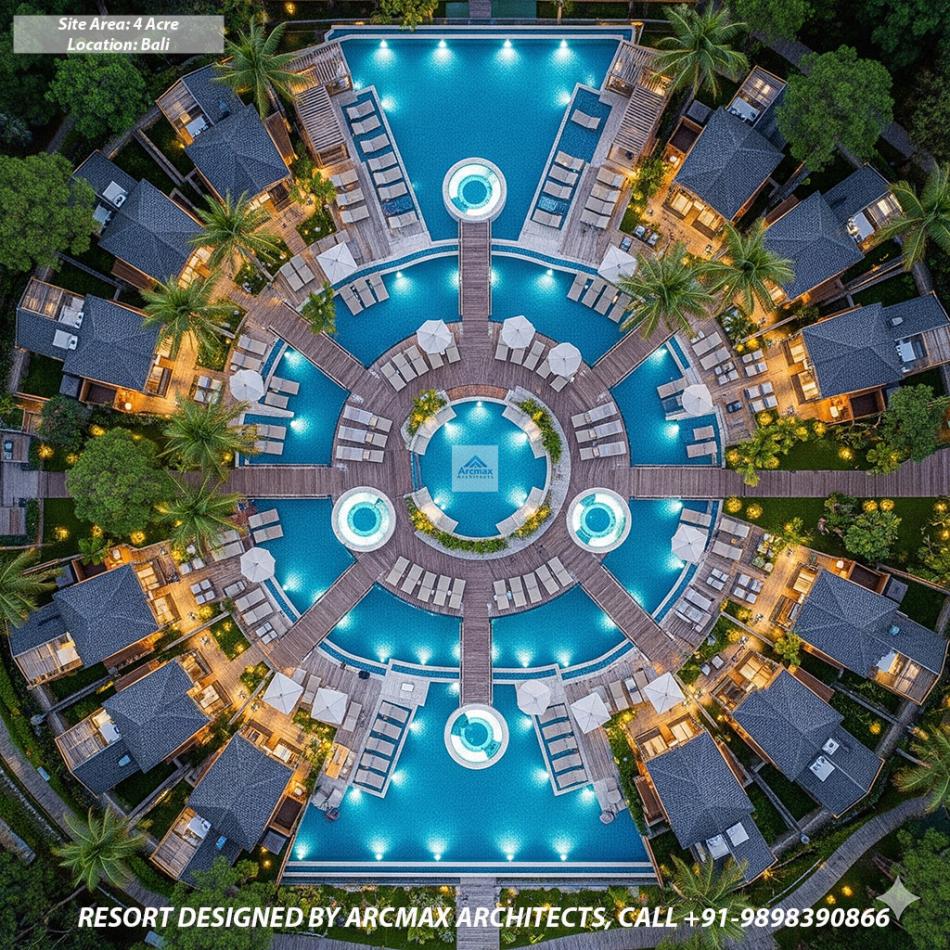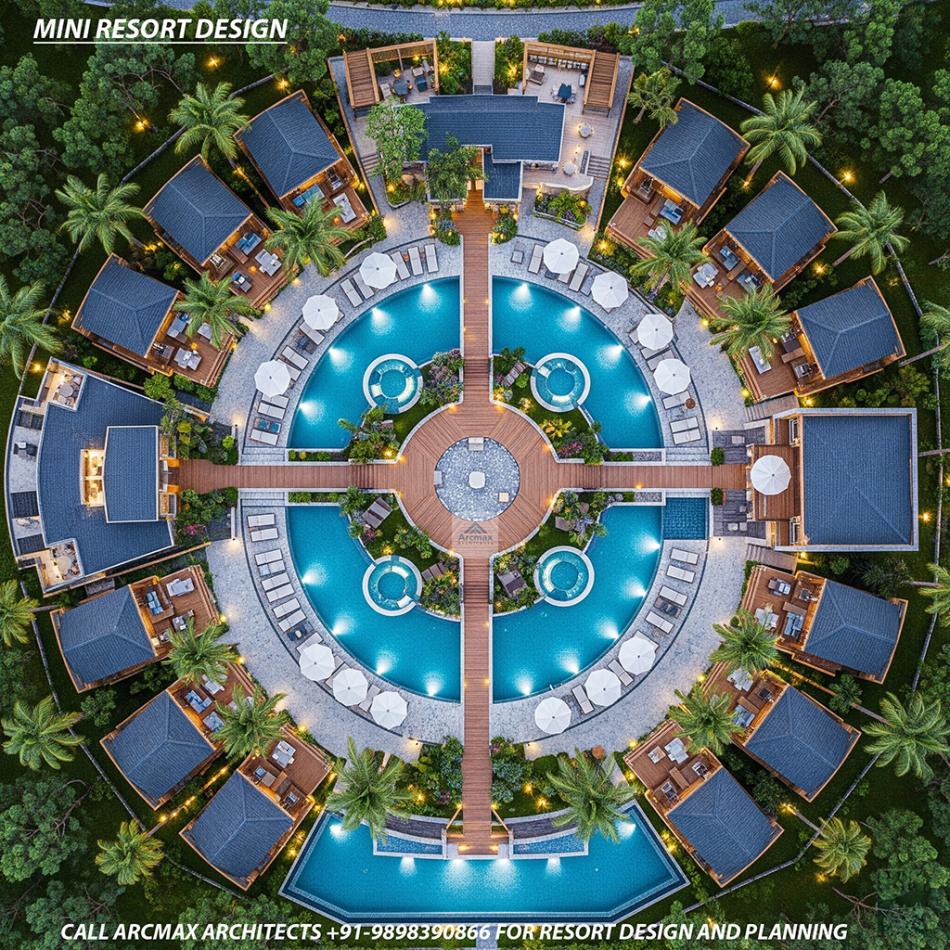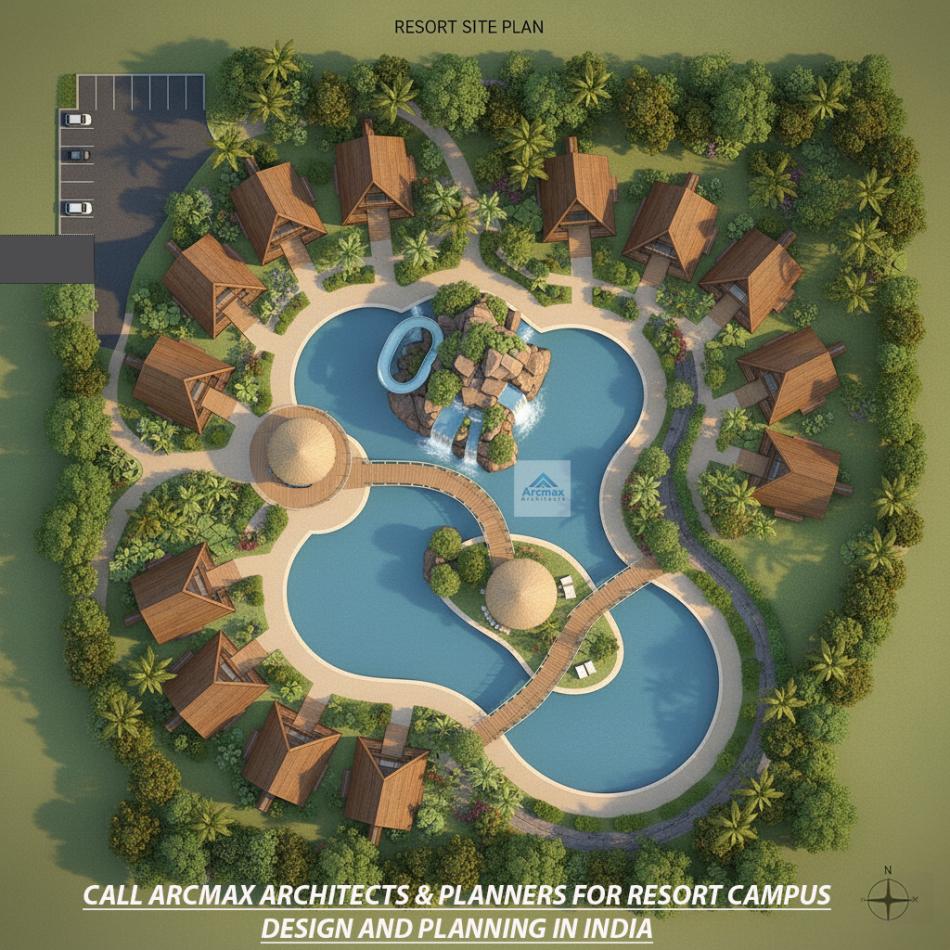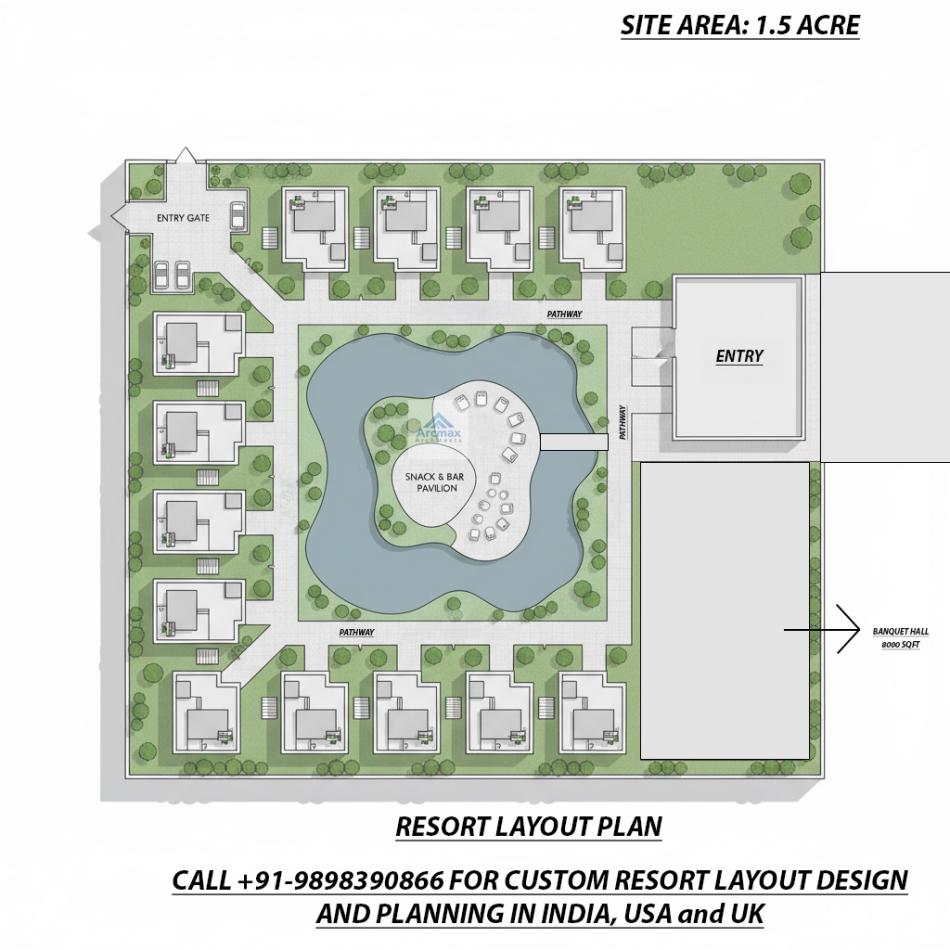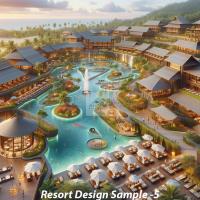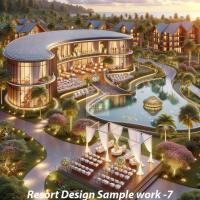Bakeri City, Pincode: 380015 Ahmedabad, Gujarat, India,
244 Madison Avenue, New York, United States
Our Client






How to Design a Perfect Resort: A Masterclass in Architecture, Landscaping, and Layout
How to Design a Perfect Resort: A Masterclass in Architecture, Landscaping, and Layout by Arcmax Architects and Planners, call +91-9898390866
Crafting the perfect resort is an act of creation that goes far beyond mere construction. It’s about building a destination, an experience, and a lasting memory. It’s where business strategy meets artistic vision. A successful resort isn't just a place to sleep; it's a self-contained universe designed for escape, indulgence, and connection.
As seasoned architects and planners in the hospitality sector, we at Arcmax Architects have distilled the art of resort design into three core pillars: Architecture, Landscaping, and Layout. Mastering the synergy between these three is the difference between a good resort and a legendary one.
Pillar 1: Architecture - Weaving a Story with Stone, Steel, and Glass
The architecture sets the tone. It’s the first visual cue a guest receives and the physical shell that houses their entire experience. The goal is not to simply build structures, but to create a powerful sense of place.
1. Embrace Contextual Modernism:
Forget generic, international-style boxes. The most compelling resort architecture is deeply rooted in its location. This doesn't mean building replicas of ancient temples, but rather abstracting local cultural and environmental cues.
Example: In a Balinese resort, this could mean using modern, clean lines but incorporating the profound indoor-outdoor connection and layered spatial hierarchy (public to private) found in traditional Balinese compounds. The roofline might echo a local silhouette, but with a contemporary twist.
2. Champion Biophilic Design:
Humans have an innate connection to nature (biophilia), and resorts are the perfect canvas to celebrate it. Integrate nature into the very fabric of the building.
How to do it:
Living Walls & Green Roofs: Incorporate vertical gardens and planted roofs that insulate buildings, manage stormwater, and create stunning visual appeal.
Natural Materials: Use locally sourced stone, sustainable timber, bamboo, and rattan. These materials age gracefully and feel authentic.
Dynamic Light & Shadow: Design apertures, screens (jalis), and overhangs that create playful patterns of light and shadow throughout the day, connecting the interior to the sun's journey.
3. Master the Material Palette:
Your choice of materials dictates the resort's aesthetic, feel, and maintenance footprint. Durability is non-negotiable, but it must be married with beauty.
Strategy: Use hard-wearing materials like local stone for floors and walls in high-traffic areas. Combine them with warmer materials like wood on ceilings and accents to avoid a cold feel. The palette should feel cohesive, drawing from the surrounding landscape.
4. Create "Wow" Moments with Signature Structures:
Every great resort has its iconic element—the feature that guests immortalize on Instagram. This could be:
An infinity pool that appears to merge with the ocean.
A dramatic, open-air lobby with a 20-meter-high vaulted ceiling.
A sky bar with panoramic views.
A unique bridge connecting two wings of the resort.
This signature element becomes the heart of the resort's brand identity.
Pillar 2: Landscaping - Crafting the Living Tapestry
Landscaping is not merely gardening; it is the art of shaping the environment to frame the architecture and guide the guest experience. It’s the softscape that complements the hardscape.
1. Think in "Outdoor Rooms":
Just as a house has a living room, dining room, and bedroom, your resort's landscape should be a sequence of defined outdoor spaces.
The Arrival Court: A grand, welcoming space that sets the first impression.
The Serene Garden: A quiet nook with shaded seating, water features, and fragrant plants for contemplation.
The Activity Lawn: An open, flexible space for yoga, events, or games.
The Poolscape: A dynamic area integrating the pool, sun decks, cabanas, and a bar.
2. Design for the Senses:
A great landscape engages more than just sight.
Sound: The gentle trickle of a water feature, the rustle of bamboo in the wind, or the crunch of gravel underfoot.
Smell: Plant frangipani, jasmine, or herbs along pathways to create a fragrant journey.
Touch: Incorporate plants with varied textures—soft moss, rough bark, feathery grasses.
3. Prioritize Sustainability and Ecology:
Modern resort landscaping must be environmentally responsible.
Xeriscaping: Use native, drought-resistant plants that thrive with minimal water and chemical input.
Water Management: Design swales and rain gardens to capture stormwater runoff. Use treated sewage water (from your STP) for irrigation.
Preserve and Enhance: Protect existing mature trees and natural topography. They provide instant maturity and ecological value that cannot be quickly replicated.
4. Use Lighting as a Landscape Tool:
Strategic landscape lighting transforms the resort after dark. Uplight majestic trees, wash light across textured walls, and use low-level path lights to guide guests safely while creating a magical, moonlit ambiance.
Pillar 3: Layout & Master Planning - The Invisible Art of Flow
The master plan is the resort's DNA. It is the invisible framework that dictates operational efficiency and the guest's subconscious journey. A poor layout can doom even the most beautiful architecture and landscaping.
1. The Golden Rule: Zoning and Circulation:
The most critical task is to seamlessly separate three distinct flows:
Guest Flow: The journey from arrival to room, to amenities, and back. This path should be intuitive, scenic, and free of congestion.
Service Flow: The movement of staff, supplies, and waste. This must be efficient and, ideally, completely invisible to guests.
Vehicle Flow: The management of arrivals, departures, and service vehicles. The drop-off should be dramatic, while parking and service yards are discreetly tucked away.
2. Create a Narrative Journey:
The guest's path through the resort should tell a story. The experience should unfold gradually, building anticipation.
Arrival: The transition from the outside world should be marked—a long, landscaped drive, a tunnel of trees, or a grand gate.
The Reveal: The first view upon entering the lobby should be a breathtaking reveal of the resort's best asset—the ocean, a mountain, or the central garden.
The Pilgrimage: The walk to the guest room should be an experience in itself—a meandering path through gardens, over a koi pond, or along the beach.
3. Optimize Room Placement and Views:
The orientation of guest rooms and villas is paramount. Every room should have a quality view and a degree of privacy.
Technique: Stagger buildings, use landscaping for screening, and orient rooms to capture prevailing breezes and avoid the harsh afternoon sun. A private balcony or patio is essential, acting as an "outdoor room" for the guest.
4. Plan for Phasing and Future Growth:
A master plan must be visionary yet pragmatic. It should outline a clear path for future expansion—whether adding a new wing, a spa, or additional villas—without disrupting the resort's core operations or aesthetic cohesion.
5. Integrate Back-of-House from Day One:
The most common planning mistake is not allocating sufficient, well-located space for back-of-house functions. The kitchen, laundry, staff areas, engineering, and storage are the engine room of the resort. Their efficient placement is the foundation of profitability and seamless service.
The Final Blueprint: Synergy is Everything
Designing the perfect resort is not a linear process. It is a constant, iterative dance between architecture, landscaping, and layout. The roofline of the building (architecture) casts a shadow on the courtyard (landscaping), which is accessed by a path defined in the master plan (layout).
The ultimate goal is to create a destination where every element feels intentional, harmonious, and deeply connected to its place. It’s about building not just with concrete and steel, but with emotion and vision. When these three pillars are in perfect balance, the resort ceases to be a mere building and becomes an unforgettable experience—a place guests will yearn to return to, time and time again.
At Arcmax Architects, we specialize in crafting transformative resort experiences from the ground up. Our holistic approach masterfully integrates innovative architecture, sustainable landscaping, and strategic master planning. We go beyond aesthetics to design profitable destinations with a powerful sense of place, blending contextual modernism with biophilic principles. From initial feasibility studies to flawless execution, our expertise ensures your resort is not only stunning but also operationally efficient and commercially viable. Partner with us to create a timeless, unforgettable retreat that captivates guests and defines your legacy in the hospitality industry.


